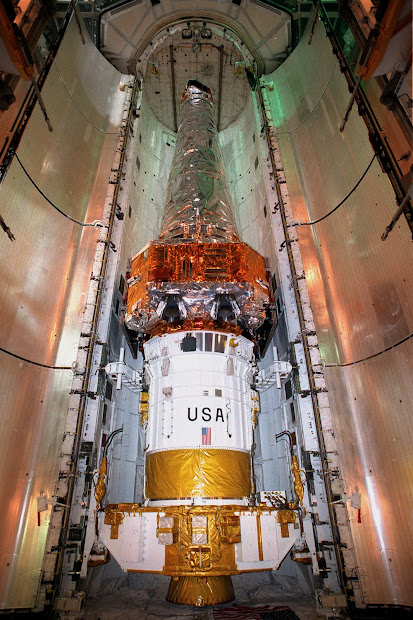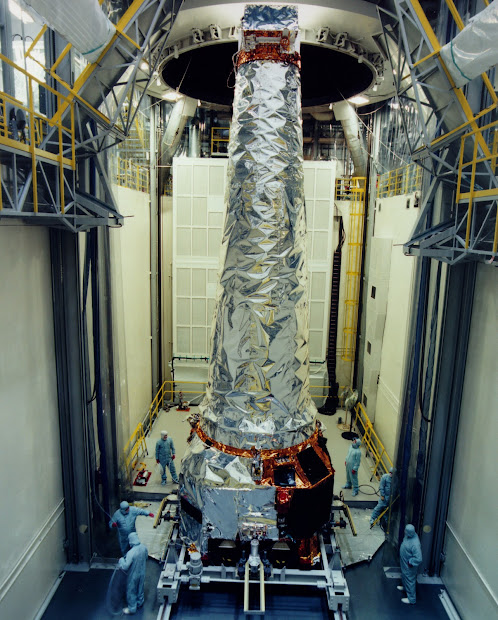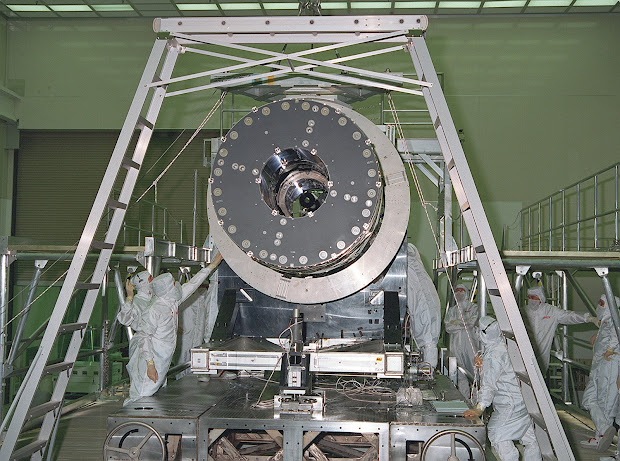Click on the image to enlarge
At Launch Pad 39-B, the Chandra X-ray Observatory sits inside the payload bay of Space Shuttle Columbia, waiting for the doors to close.
Click on the image to enlarge
The Chandra X-ray Observatory in honor of Subrahmanyan Chandrasekhar, was launched and deployed by the Space Shuttle Columbia on July 23, 1999. The combination of high resolution, large collecting area, and sensitivity to higher energy X-rays will make it possible for Chandra to study extremely faint sources, sometimes strongly absorbed, in crowded fields. Chandra was boosted into an elliptical high-earth orbit that allows long-duration uninterrupted exposures of celestial objects.
Click on the image to enlarge
This photo shows the Chandra X-Ray Observatory (CXO), formerly Advanced X-Ray Astrophysics Facility (AXAF), High Resolution Mirror Assembly (HRMA) being removed from the test structure in the X-Ray Calibration Facility (XRCF) at the Marshall Space Flight Center (MSFC). The AXAF was renamed CXO in 1999. The CXO is the most sophisticated and the world's most powerful x-ray telescope ever built. It observes x-rays from high-energy regions of the universe, such as hot gas in the remnants of exploded stars. The HRMA, the heart of the telescope system, is contained in the cylindrical "telescope" portion of the observatory. Since high-energy x-rays would penetrate a normal mirror, special cylindrical mirrors were created. The two sets of four nested mirrors resemble tubes within tubes. Incoming x-rays graze off the highly polished mirror surface and are furneled to the instrument section for detection and study. MSFC's XRCF is the world's largest, most advanced laboratory for simulating x-ray emissions from distant celestial objects. It produces a space-like environment in which components related to x-ray telescope imaging are tested and the quality of their performances in space is predicted. TRW, Inc. was the prime contractor for the development of the CXO and NASA's MSFC was responsible for its project management. The Smithsonian Astrophysical Observatory controls science and flight operations of the CXO for NASA from Cambridge, Massachusetts.
Credit: NASA












0 comment(s):
Post a Comment